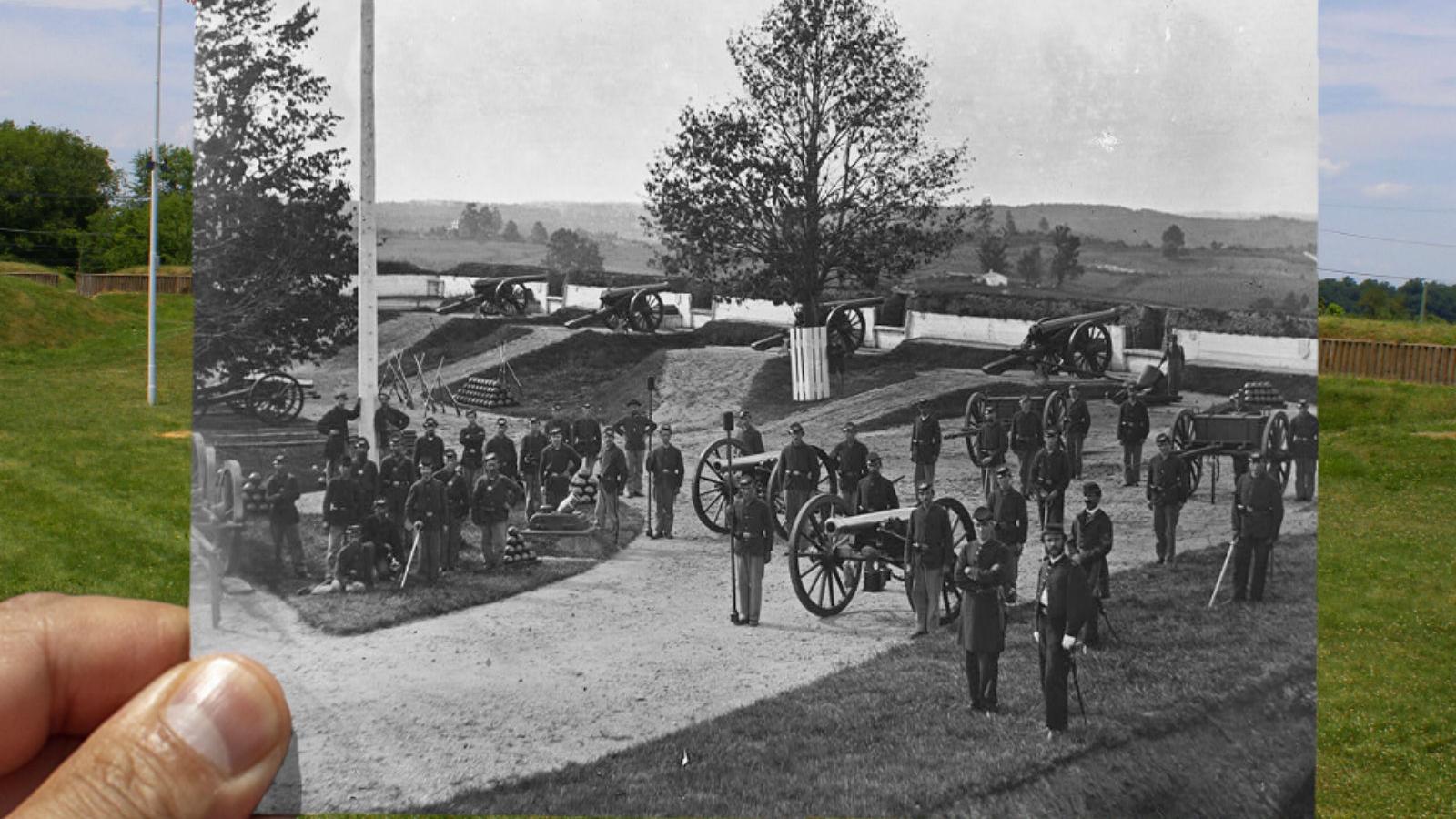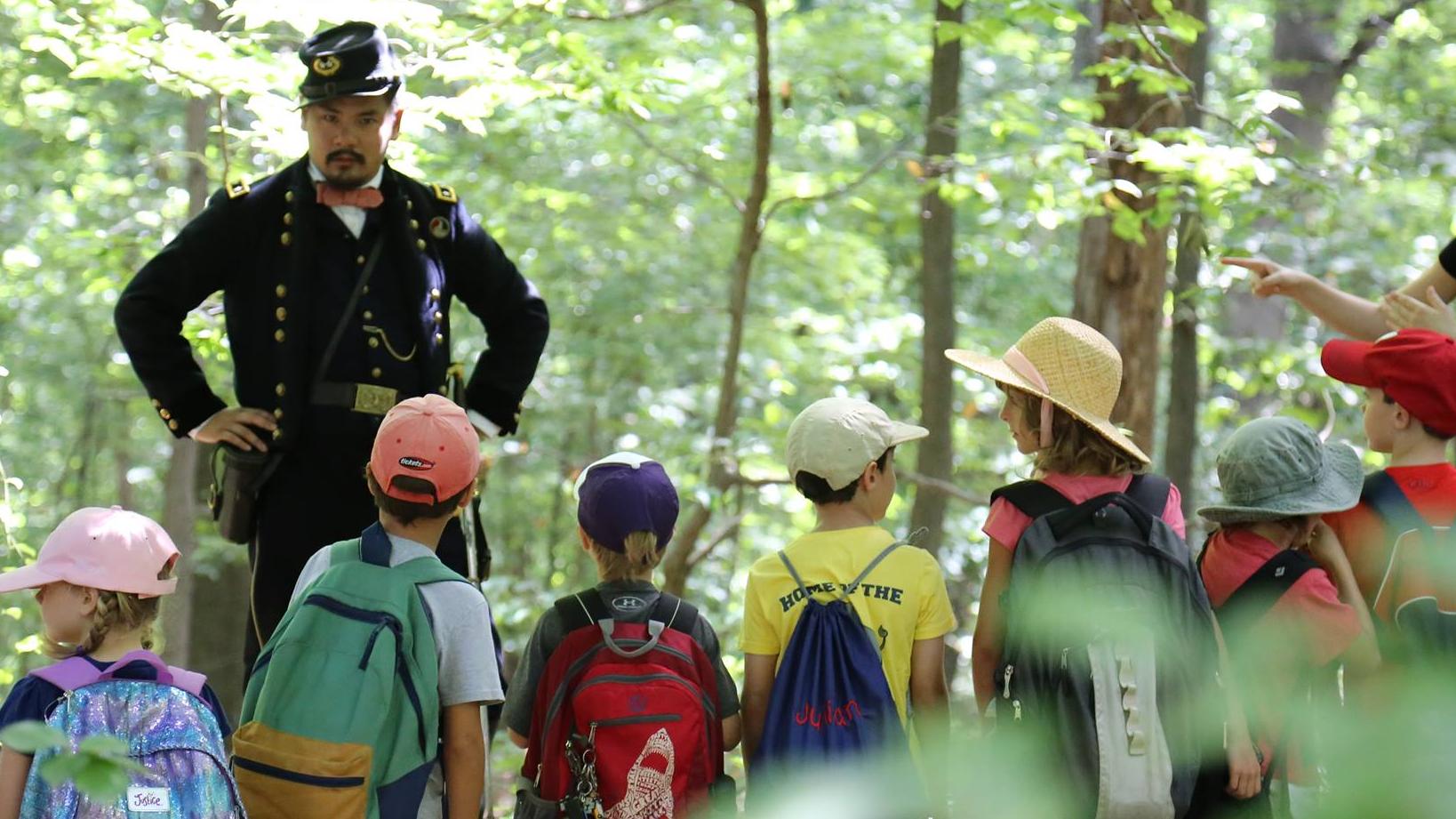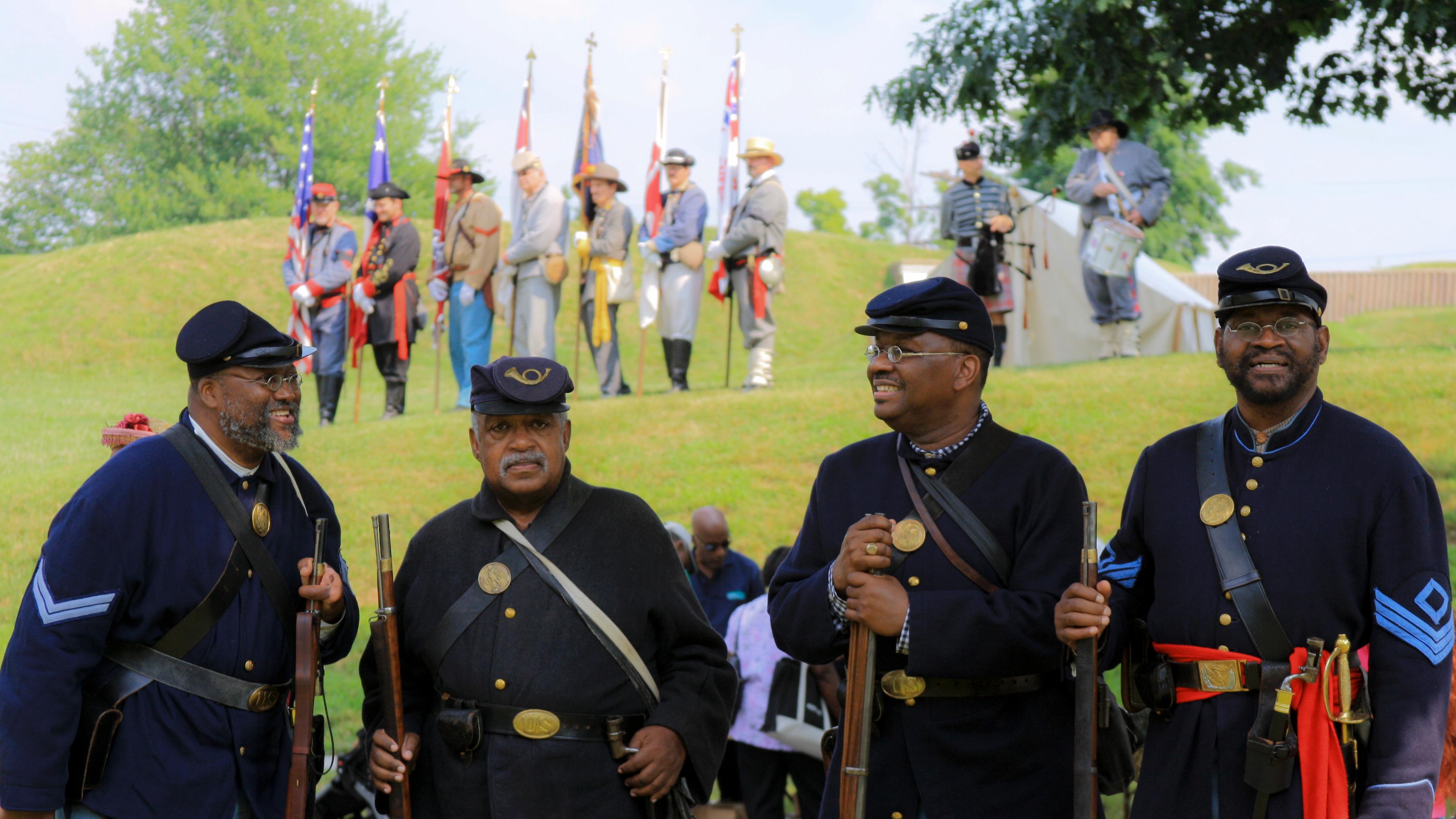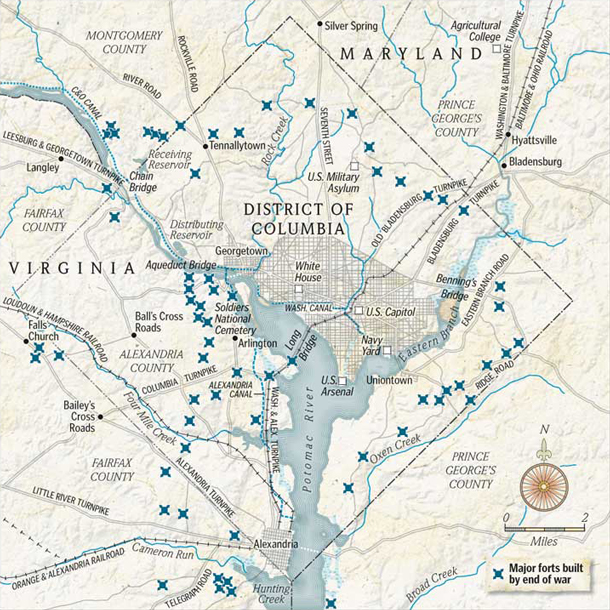Welcome to DU!
The truly grassroots left-of-center political community where regular people, not algorithms, drive the discussions and set the standards.
Join the community:
Create a free account
Support DU (and get rid of ads!):
Become a Star Member
Latest Breaking News
General Discussion
The DU Lounge
All Forums
Issue Forums
Culture Forums
Alliance Forums
Region Forums
Support Forums
Help & Search
American History
Related: About this forumThe Civil War Defenses of Washington, Protecting The Capital From Attack, 1861-1865
Last edited Sun Mar 7, 2021, 08:51 PM - Edit history (4)
1. Welcome to the Civil War Defenses of Washington, National Park Service, NPS.
__________
2. *Watch Video, https://www.nps.gov/media/video/view.htm?id=6328A4BC-921D-0835-E8B5253E9552512B
- An overview of the Civil War Defenses of Washington, the roles of Fort Stevens and other forts in the Civil War, and how park visitors can experience these places today. National Park Service, NPS.
_______________
"The capital can't be taken!"
On forested hills surrounding the nation's capital are the remnants of a complex system of Civil War fortifications. These strategic buttresses transformed the young capital into one of the world's most fortified cities. By 1865, 68 forts and 93 batteries armed with over 800 cannons encircled Washington, DC. Today, you can visit 17 of the original sites now managed by the National Park Service.
Read More, https://www.nps.gov/cwdw/index.htm


- Fort Dupont summer camps.

- Annual commemorations of the Battle of Fort Stevens.
https://www.nps.gov/cwdw/index.htm
_______________

- Fort Totten, Wash., D.C. Parrot gun with Officers, Companies A & B, Massachusetts Heavy Artillery.
The Civil War Defenses of Washington were a group of Union Army fortifications that protected the federal capital city, Washington, D.C., from invasion by the Confederate States Army during the American Civil War (see Washington, D.C., in the American Civil War). The sites of some of these fortifications are within a collection of National Park Service (NPS) properties that the National Register of Historic Places identifies as the Fort Circle. The sites of other such fortifications in the area have become parts of state, county or city parks or are located on privately owned properties. Parts of the earthworks of some such fortifications still exist. Other such fortifications have been completely demolished.
Civil War: The Washington area had 68 major enclosed forts, as well as 93 prepared (but unarmed) batteries for field guns, and seven blockhouses surrounding it during the American Civil War. There were also twenty miles of rifle pits and thirty miles of connecting military roads. These were Union forts, and the Confederacy never captured one. Indeed, most never came under enemy fire. These were used to house soldiers and store artillery and other supplies.
In the District of Columbia, the Union Army built the following forts in areas which had remained relatively rural on the limits of the city. Most of the land was privately owned and taken over by the military at the beginning of the Civil War. Here are some examples:
- Fort Slemmer: The 24 acres land was owned by Henry Douglas, a florist. Flowers, 1,970 fruit trees, vines, bushes, and other plants were destroyed to complete the fort. This made the land owner unable to work in this trade.
- Fort Reno: The land belonged to Giles and Miles Dyer. The farmhouse was used by the Army as the headquarters for various commands encamped in the area. The fortification covered 20 acres of land. 50 additional acres were used for barracks, camps, and a parade ground.
-Forts Chaplin and Craven: These forts were built on land belonging to Selby B. Scaggs. He owned a farm there totaling approximately 400 acres and worth $52,000. Four laborers also lived there...
More, https://en.wikipedia.org/wiki/Civil_War_Defenses_of_Washington
____________

- Map of the Defenses of Washington.
- (6 mins). American Artifacts Preview: Civil War Defenses of Washington, author Dale Floyd at Fort Ward Museum, Alexandria, Virginia. Each week American Artifacts takes viewers into archives, museums & historic sites around the country. At the outbreak of the Civil War in the spring of 1861, Washington, DC, was lightly defended and vulnerable to attack, with only one fort located 12 miles south of the city and the Confederate state of Virginia just across the Potomac River.
By 1865, the nation's capital arguably had become the most fortified city in the world, with about 70 armed forts and batteries encircling the city. We visited three of the surviving forts with Dale Floyd, author of a study on the Civil War Defenses of Washington for the National Park Service.
InfoView thread info, including edit history
TrashPut this thread in your Trash Can (My DU » Trash Can)
BookmarkAdd this thread to your Bookmarks (My DU » Bookmarks)
1 replies, 1466 views
ShareGet links to this post and/or share on social media
AlertAlert this post for a rule violation
PowersThere are no powers you can use on this post
EditCannot edit other people's posts
ReplyReply to this post
EditCannot edit other people's posts
Rec (7)
ReplyReply to this post
1 replies
 = new reply since forum marked as read
Highlight:
NoneDon't highlight anything
5 newestHighlight 5 most recent replies
= new reply since forum marked as read
Highlight:
NoneDon't highlight anything
5 newestHighlight 5 most recent replies
The Civil War Defenses of Washington, Protecting The Capital From Attack, 1861-1865 (Original Post)
appalachiablue
Mar 2021
OP
niyad
(113,274 posts)1. KNR and bookmarking.